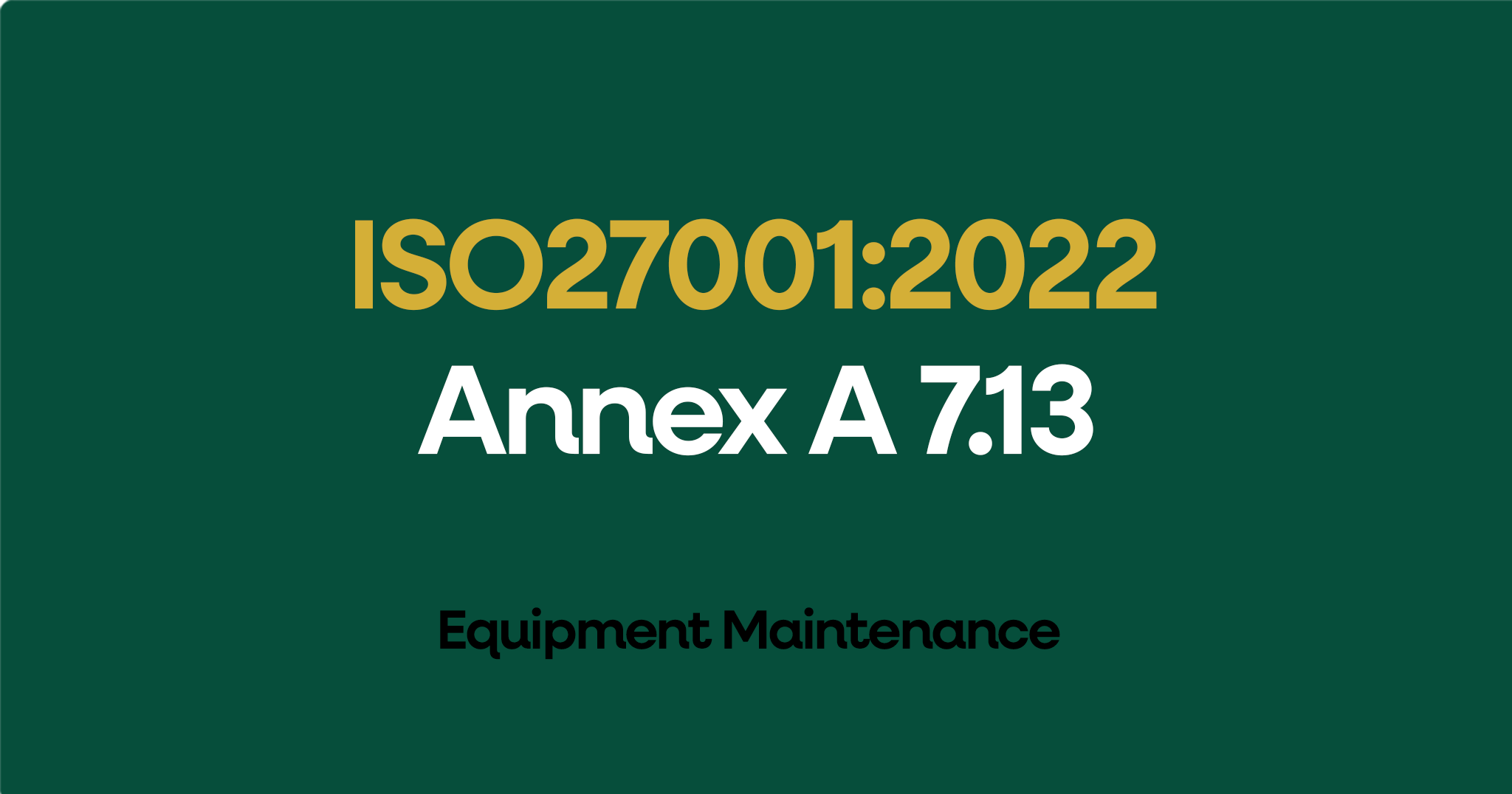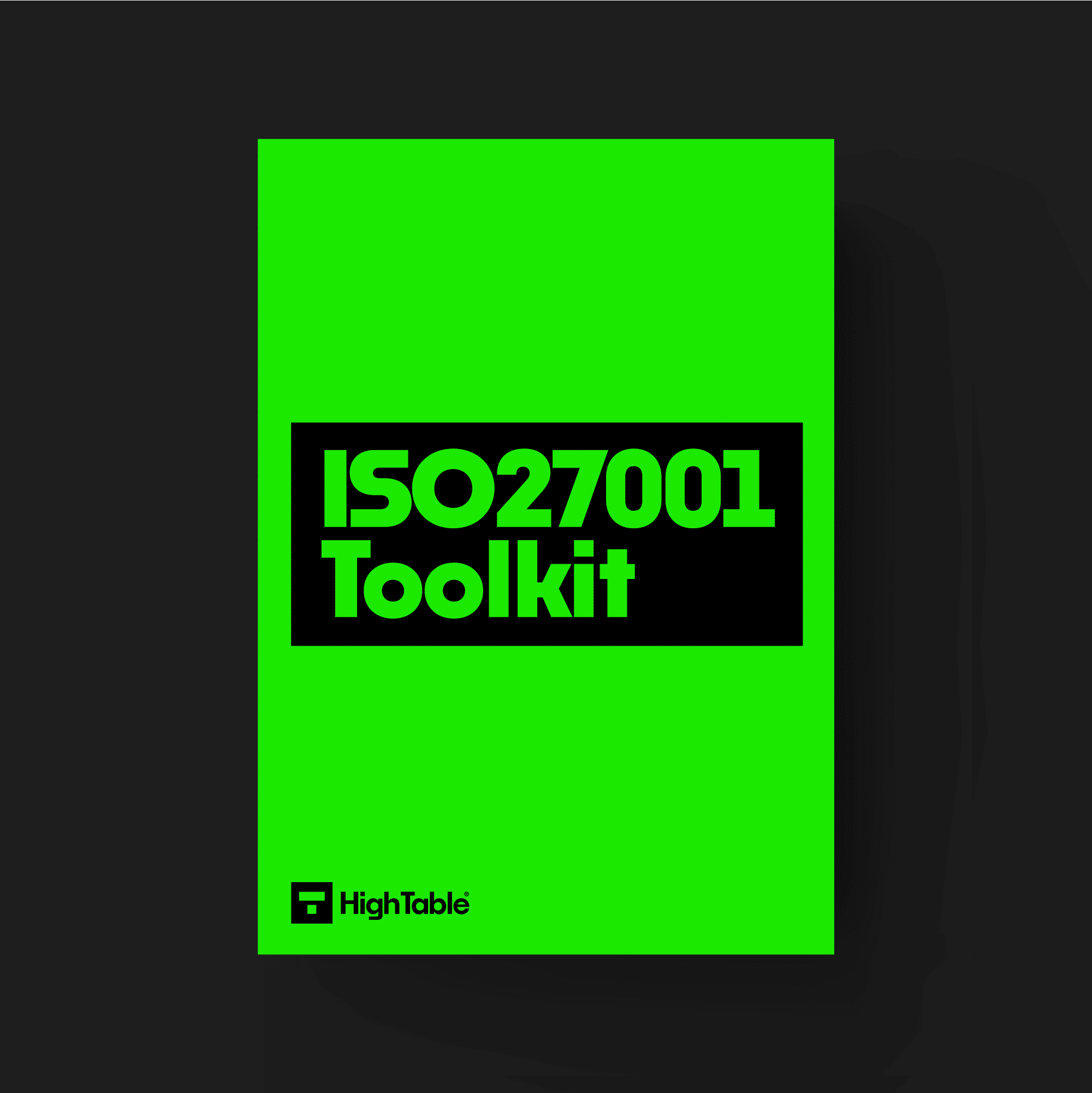ISO 27001 Equipment Maintenance
The focus for this ISO 27001 Control is maintaining equipment and this is about maintaining equipment in line with manufacturer recommendations to prevent failure or damage.
ISO 27001 Equipment Maintenance understands that equipment requires maintaining so as to eliminate or reduce the likelihood of equipment failure and information security vulnerabilities over time.
Table of Contents
What is ISO 27001 Annex A 7.13?
ISO 27001 Annex A 7.13 Equipment Maintenance is an ISO 27001 control that looks to make sure you maintain your equipment in line with guidance so it keeps working and protects the confidentiality, integrity and availability of data.
ISO 27001 Annex A 7.13 Purpose
The purpose of ISO 27001 Equipment Maintenance is to prevent loss, damage, theft or compromise of information and other associated assets and interruption to the organisations operations caused by lack of maintenance.
ISO 27001 Annex A 7.13 Definition
The ISO 27001 standard defines ISO 27001 Annex A 7.13 as:
Equipment should be maintained correctly to ensure availability, integrity and confidentiality of information.
ISO 27001:2022 Annex A 7.13 Equipment Maintenance
Watch the ISO 27001 Annex A 7.13 Tutorial
In the video ISO 27001 Equipment Maintenance Explained – ISO27001:2022 Annex A 7.13 I show you how to implement it and how to pass the audit.
How to implement ISO 27001 Annex A 7.13
Maintain Equipment
Equipment that is used will need to be maintained so that it keeps operating. If you do not maintain equipment then the risk of the device failing or being compromised is going to increase. For this control it is as simple as following the manufactures guidelines for maintenance for your equipment.
To some extent this control is outside of your gift to control but there are some considerations that you can put in place and evidence.
Manufacturers Guidelines
To meet the control you would, as with everything, operate any equipment and maintain it in line with the manufacturers guidelines. This usually means appropriate professional maintenance. The professional maintenance would include testing and inspection although we would expect this to be a legal and regulatory requirement anyway, usually around health and safety.
Use Professionals
The advice here is, if you have a server room or information processing facility to bring in professional third parties to advise and maintain equipment. This is not something you will undertake yourself and there are many laws that govern this that are outside your capability.
Providing Access
The things that you can do and consider include access. We cover this in access control but looking at how people are allowed on site or remotely connect and how you supervise the activity are in your control. Monitoring for faults and having a process to record and respond to incidents is a simple step you can implement.
Fire Safety Equipment
There are some things that you might not have thought about that can catch you out. These include maintaining all your fire safety equipment such as extinguishers and alarms.
How to comply
To comply with ISO 27001 Annex A 7.13 Equipment Maintenance you are going to
- Get the help of professional third parties to put in place controls around maintenance where required.
- Have policies and procedures in place
- Assess your equipment and perform a risk assessment
- Implement controls proportionate to the risk posed
- Keep maintenance records
- Test the controls that you have to make sure they are working
Top 3 Mistakes People Make
The top 3 mistakes people make for ISO 27001 Annex A 7.13 Equipment Maintenance are
1. You have no records of maintenance
Keep records that show that things have been maintained and that it has followed the guidance of the manufacturer. Record keeping!
2. You forgot about fire extinguishers
Proper left field this one but they do check and they can fail you on it. Check!
3. Your document and version control is wrong
Keeping your document version control up to date, making sure that version numbers match where used, having a review evidenced in the last 12 months, having documents that have no comments in are all good practices.
Related ISO 27001 Controls
ISO 27001 Annex A 7.5 Protecting Against Physical and Environmental Threats
ISO 27001 Annex A 7.8 Equipment Siting And Protection
ISO 27001 Annex A 7.11 Supporting Utilities
ISO 27001 Annex A 7.14 Secure Disposal Or Re-Use Of Equipment
Controls and Attribute Values
| Control type | Information security properties | Cybersecurity concepts | Operational capabilities | Security domains |
|---|---|---|---|---|
| Preventive | Confidentiality | Protect | Physical Security | Protection |
| Integrity | Detect | Asset Management | Resilience | |
| Availability |
About the author
Stuart Barker is a veteran practitioner with over 30 years of experience in systems security and risk management.
Holding an MSc in Software and Systems Security, Stuart combines academic rigor with extensive operational experience. His background includes over a decade leading Data Governance for General Electric (GE) across Europe, as well as founding and exiting a successful cyber security consultancy.
As a qualified ISO 27001 Lead Auditor and Lead Implementer, Stuart possesses distinct insight into the specific evidence standards required by certification bodies. He has successfully guided hundreds of organizations – from high-growth technology startups to enterprise financial institutions – through the audit lifecycle.
His toolkits represents the distillation of that field experience into a standardised framework. They move beyond theoretical compliance, providing a pragmatic, auditor-verified methodology designed to satisfy ISO/IEC 27001:2022 while minimising operational friction.


